Enlightening Facts About The Life And Legacy Of Patsy Cline
Country music star Patsy Cline is not only a renowned singer, but she was also a pioneer for female music artists. The talented high school dropout taught herself to play piano at a young age and established herself in the music industry despite coming from humble beginnings. She was the first woman to be inducted into the Country Music Hall of Fame, breaking down barriers for female performers to come.
She also paved the way for country music stars to move into the genre of pop. Cline incurred great accomplishments in her short 30 years of life, so let’s discover more amazing facts about this star.
She Was Named Virginia, And Born In Virginia
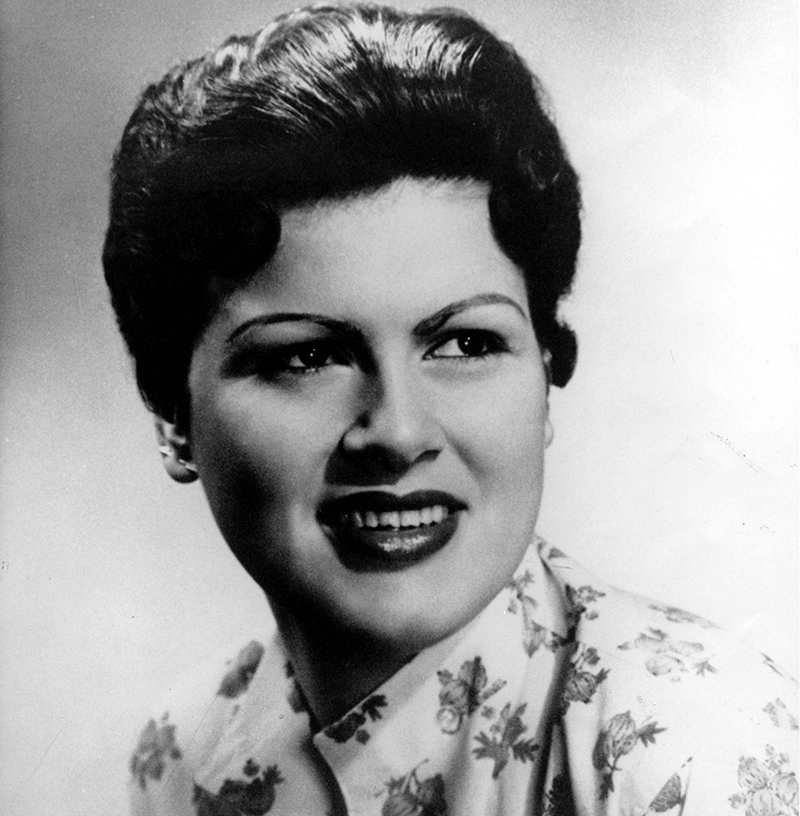
According to Biography, Patsy’s mother, Hilda, was only 16-years-old when she married Patsy’s father, Samuel, who was 41-years-old. Despite their 25 year age gap, the pair had three children, and Patsy was the oldest. They named her Virginia Patterson Hensley, which may have been related to the fact that she was born in Virginia.
Virginia started going by the name Patsy in 1952, at the age of twenty, when she began performing with Bill Peer and his band. The musician suggested she go by Patsy when she perform with him, and the name stuck with crowds.
A Musical Prodigy
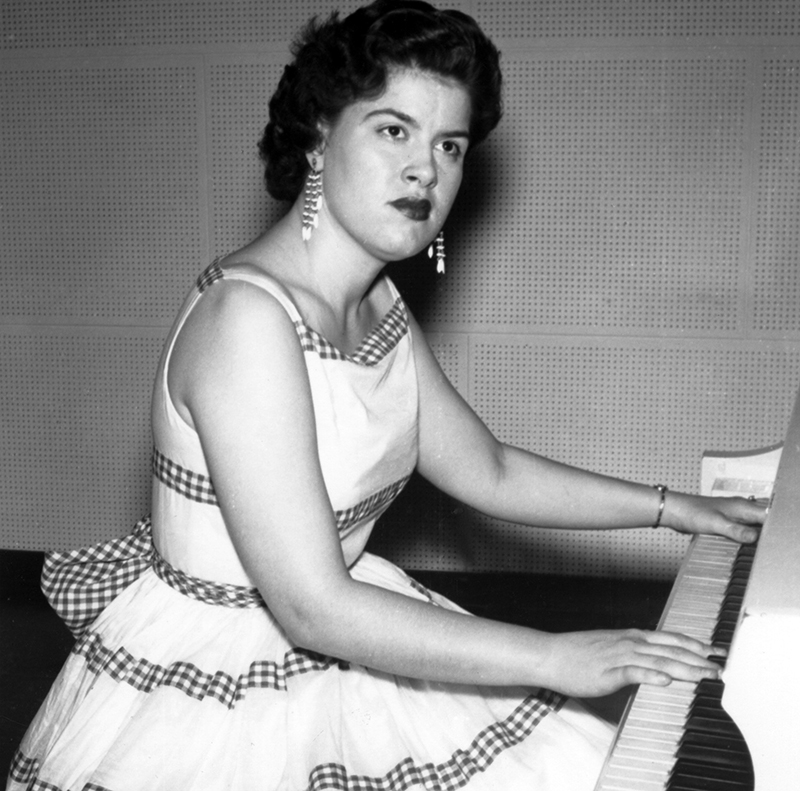
When Patsy was 8-years-old she taught herself how to play piano, according to Biography. At the age of 13, Patsy suffered from a throat infection that required serious medical attention. U Discover Music writes that it was this injury that brought out Patsy’s “booming” voice.
When she was 14, she decided to audition for a local radio station. She convinced disc jockey Jim McCoy of WINC radio to let her perform live. The Country Music Hall of Fame and Museum notes that Patsy also appeared in talent contests and a cabaret nightclub simultaneous to performing on the radio.
Tumultuous Adolescence
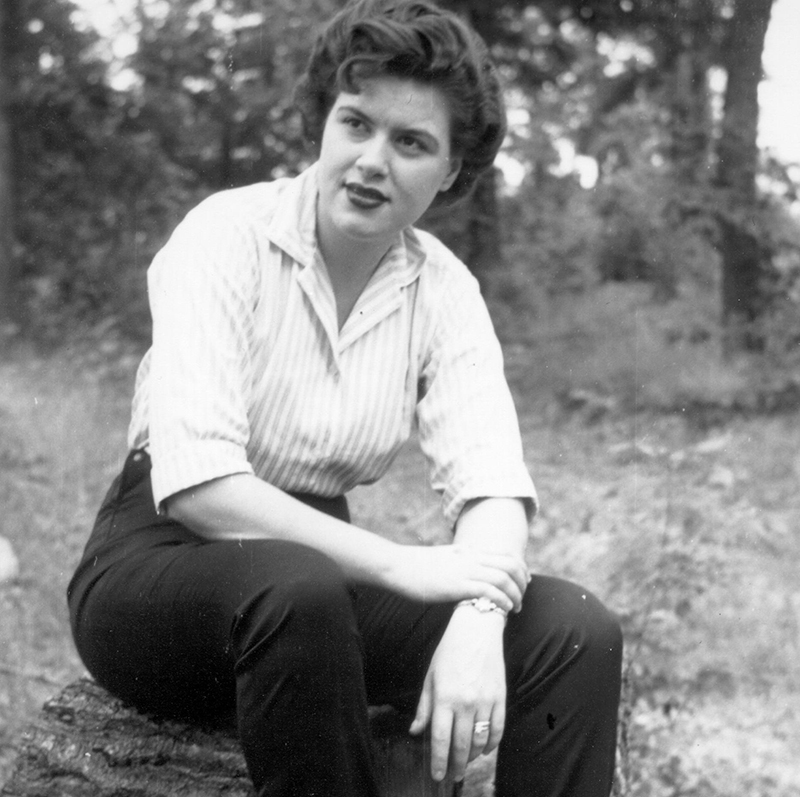
Patsy’s father left when she was fifteen due to marital conflicts. However, the biographical book Honky Tonk Angel: An Intimate Story Of Patsy Cline states that Patsy had a great relationship with her mother. Hilda is quoted saying that she and Patsy “were more like sisters.”
Being more of an equal with her mother may explain why Patsy left high school to help support the household. With a dead-end job and no school on her mind, Patsy became completely committed to becoming a singer.
She Chased Down Her Dreams Vigorously
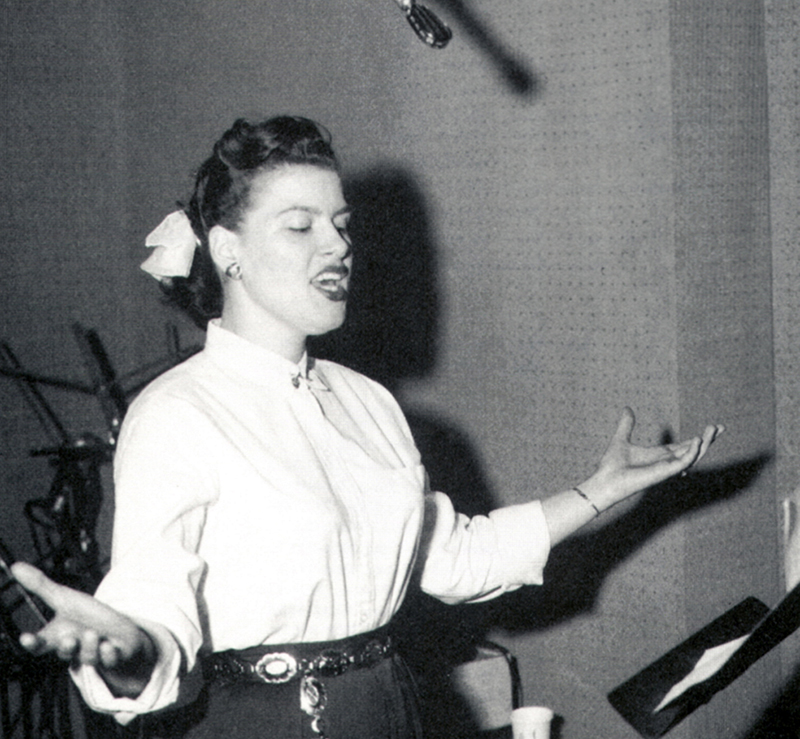
Rolling Stone writes that by the time Patsy was sixteen, she had moved 19 times. That didn’t stop her from pursuing her dreams. At age fifteen she boldly wrote to Grand Ole Opry to request an audition. They responded asking for recordings and pictures.
Instead, Patsy showed up at a Wally Fowler concert, talked her way backstage, and auditioned for him on the spot. Her family then received a call asking her to audition for the Opry. Her mother and siblings joined on an overnight drive to Nashville, where Patsy sang for hillbilly boogie musician Moon Mullican.
She Joined A Band
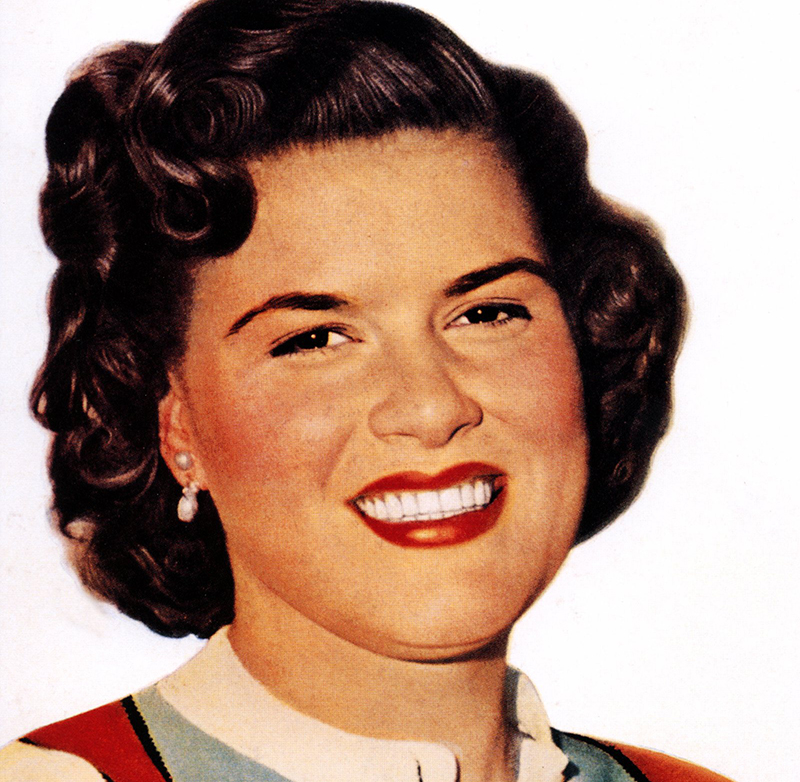
After a strong audition, Patsy performed at the Grand Ole Opry in August 1949 at the age of 16, according to Rolling Stone. The family went back to Virginia, but Patsy didn’t lose a beat.
She continued as a local singer, and at the age of twenty, she auditioned for the local band Melody Boys and Girls. She began performing regularly with the band and developed a romantic relationship with the bandleader, Bill Peer.
It Was Love At First Sight
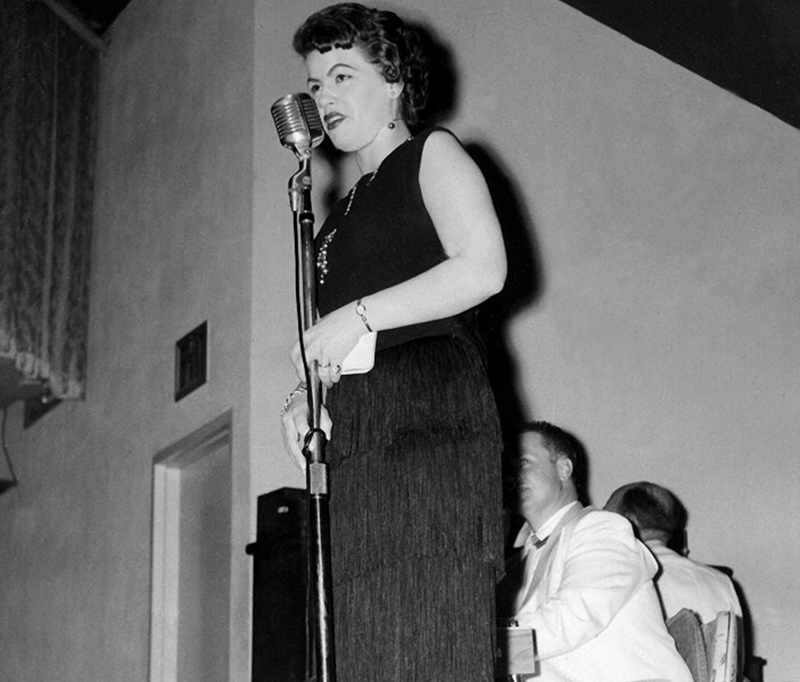
Gerald Cline saw Patsy performing with Bill at the Moose Lodge in Maryland. Biographical writer Ellis Nassour quotes Gerald as saying, “It might not have been love at first sight when Patsy saw me, but it was for me.”
Patsy married Gerald months before her 21st birthday, giving her the star name “Patsy Cline.” She carried this name into Four Star Records, where she landed her first record deal in 1954. She landed the deal as a result of Bill Peer recording Patsy on tapes and getting one into the hands of Bill McCall, the president of the record label.
The Label Came With A Pretty Price
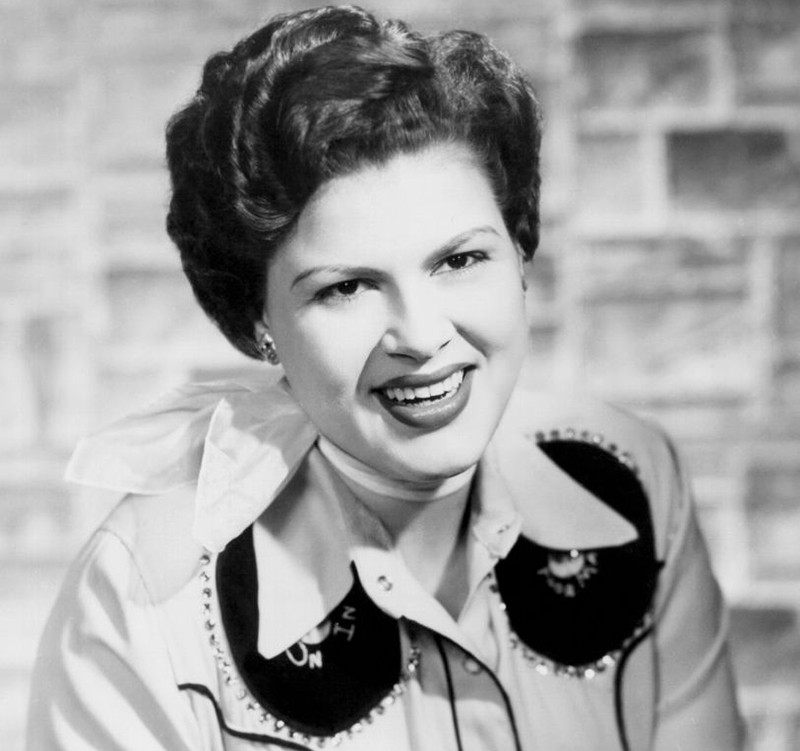
Writer Ed Ward of NPR states that Patsy’s two-year contract with Four Studio Records left most of her recording’s profits in the hands of the label. She only received a little over 2% of in royalties. To make matters worse, the singles she recorded with the label– between 1955 and 1956– failed to become hits.
In an effort to promote her image, Patsy appeared on the ABC television program Ozark Jubilee. The local station proved as anticlimactic as most of her other local performances. Up to this point, her career seemed to be stuck in a plateau.
Patsy Received National Attention
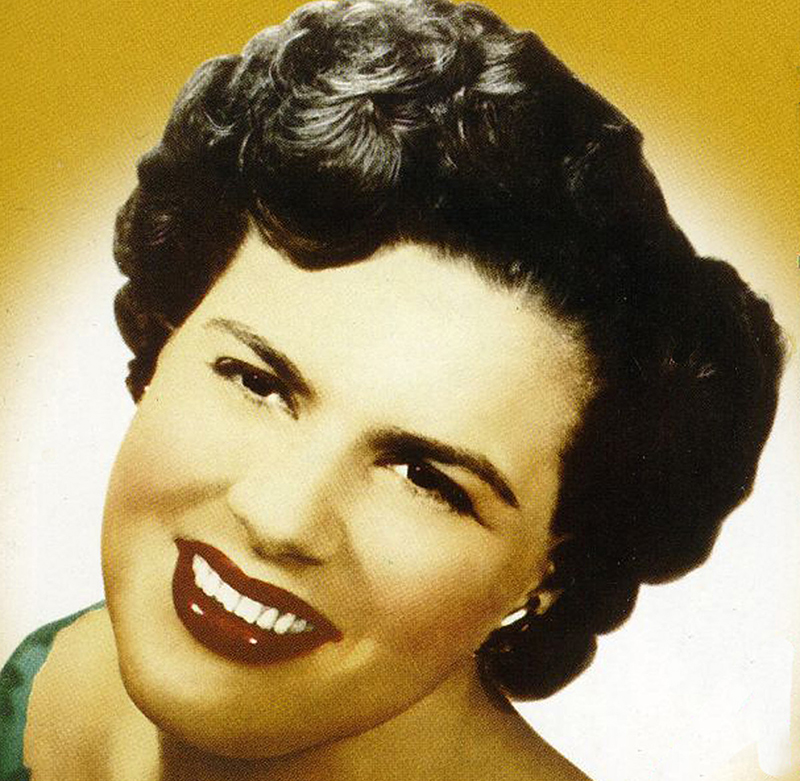
Biography states that Patsy had landed a spot on the Arthur Godfrey’s Talent Scouts show, and wowed audiences across the country with her performance of “Walkin’ After Midnight.” In order to be in the competition, her mother had to pretend to be her talent scout.
Since the talent scouts couldn’t be family members, Hilda also had to pretend that she wasn’t related to her daughter. Rolling Stone says in response to being asked if she’d known Patsy all her life, Hilda said, “Yes, just about.” The fib did wonders for Patsy’s career, as “Walkin’ After Midnight” hit the charts after she won the competition.
It Was Time To Ditch The Cowgirl Look
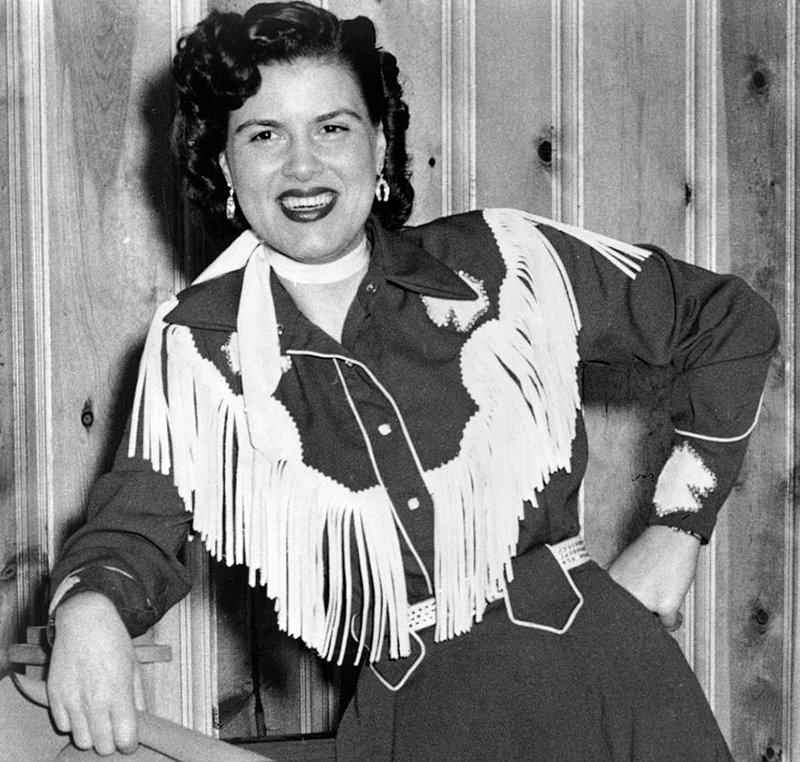
Rolling Stone says that Patsy’s cowgirl outfits, designed by her mother Hilda, no longer cut it after her appearance on the Arthur Godfrey Talent Scouts. A producer of the show suggested she dress more cosmopolitan. That’s when red lipstick became her best friend.
The advice wasn’t all that Patsy received from the show. She also got a $10,000 first prize reward, which she gave to Hilda to help with the mortgage. Around this same time, her marriage went south.
She Didn’t Wait Long Between Marriages
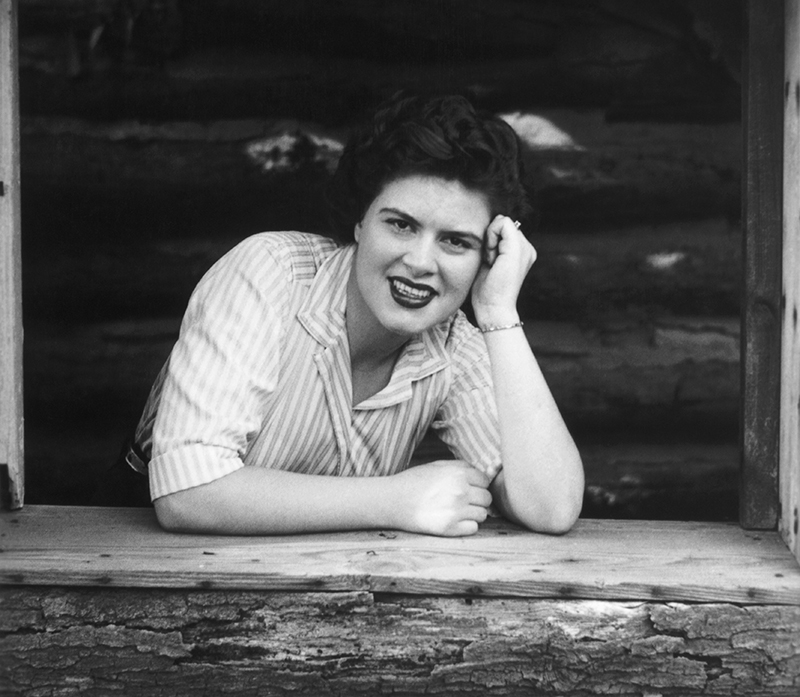
Patsy met Charlie Dick in 1956 while performing with the Virginia band Kountry Krackers. Shortly thereafter, Charlie was drafted into the US Army. Meanwhile, Patsy and her first husband, Gerald, stopped living together.
In 1957, Patsy and Gerald officially became divorced. According to Rolling Stone, Patsy and Charlie were married at her mother Hilda’s house in September of 1957. The newlyweds then moved to Nashville, and a year later they had their first child, a daughter named Julie.
Things Were Looking Up
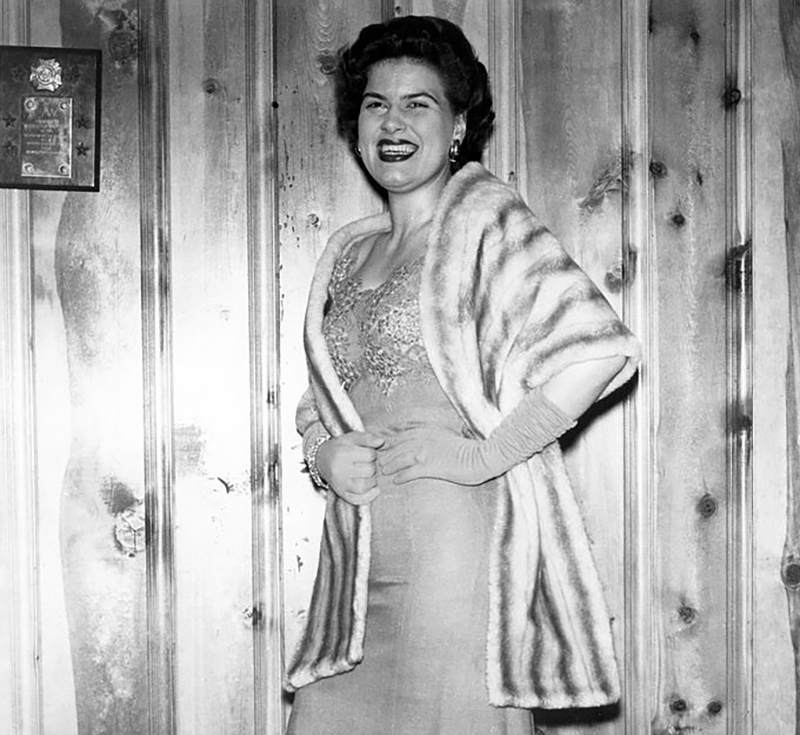
By the new decade, Patsy had a new husband, a little girl, and was ready to take the next step in her music career. After seeking to work with Hubert Long, she was redirected to manager Randy Hughes who she ultimately signed a deal with.
With him scheduling her affairs, Patsy began recieving more regular work without having to sacrifice time with her family to arrange such events. He ensured that she had good pay and got her frequent spots on the Grand Ole Opry.
She Got A New Record Deal
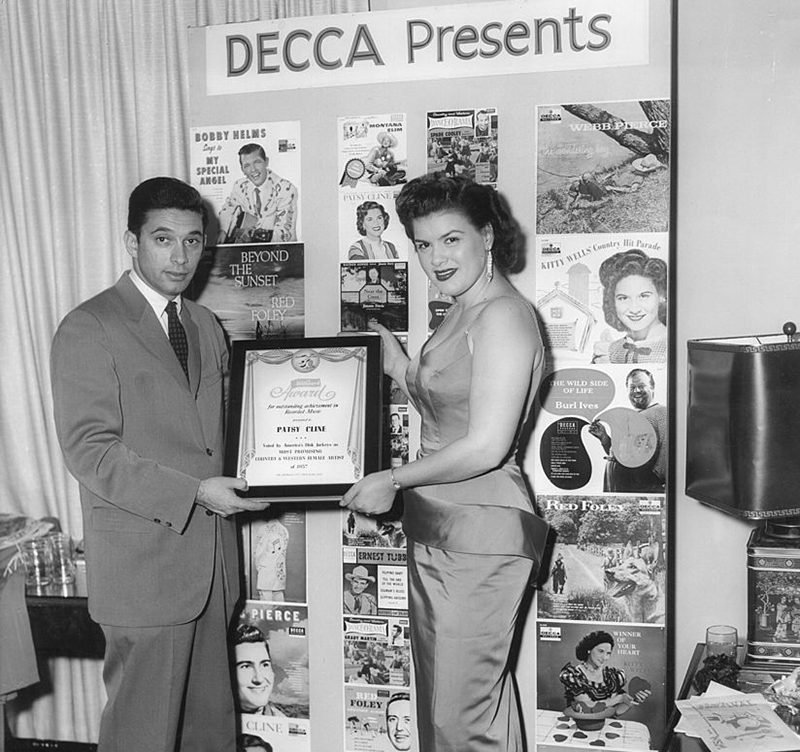
Patsy recorded her final singles with Four Star Records: “Lovesick Blues” and “Crazy Dreams.” She signed with Decca Records in 1960 after receiving a thousand dollar advance. With producer Owen Bradley and backup singers The Jordanaires, Patsy recorded “I Fall To Pieces.”
The song hit number 12 on the Billboard Pop Chart. Simultaneously, Patsy released her favored song, “Lovin’ In Vain,” which made it to the Billboard Hot Country and Western Sides chart in April of 1961.
Her Face Was Not The Same
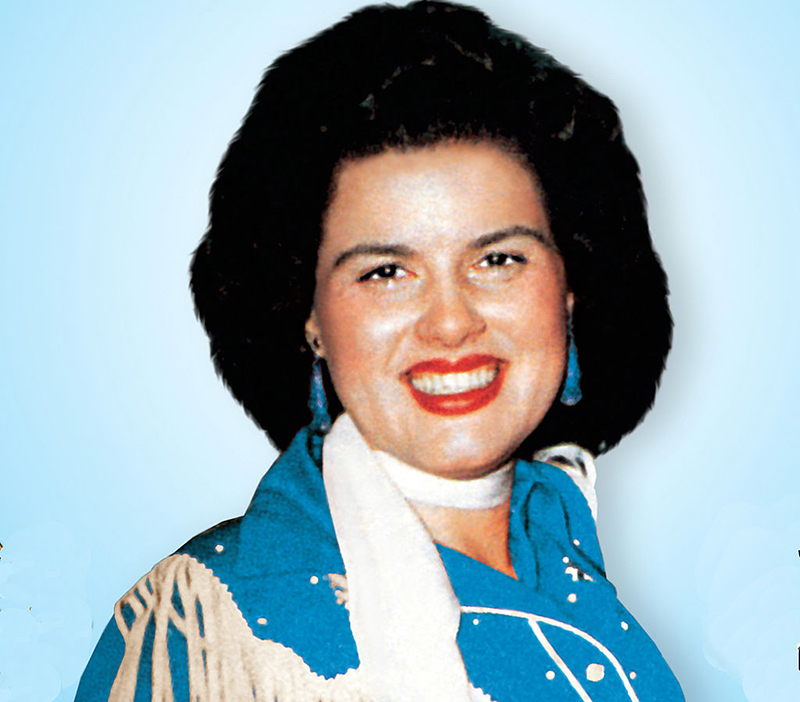
Patsy brought her mother and siblings to see her Nashville home. Patsy and her brother headed out to the store to get materials for her mother, who was going to make Patsy a new outfit. On the way, their car was struck head-on by another vehicle.
Patsy flew through the windshield, which resulted in extensive facial damage. She also had a broken wrist and a dislocated hip. She spent a month in the hospital and underwent plastic surgery. Nevertheless, she continued to suffer from pain and went on to wear heavy makeup to cover the scars.
Her Next Recording Was A Difficult One
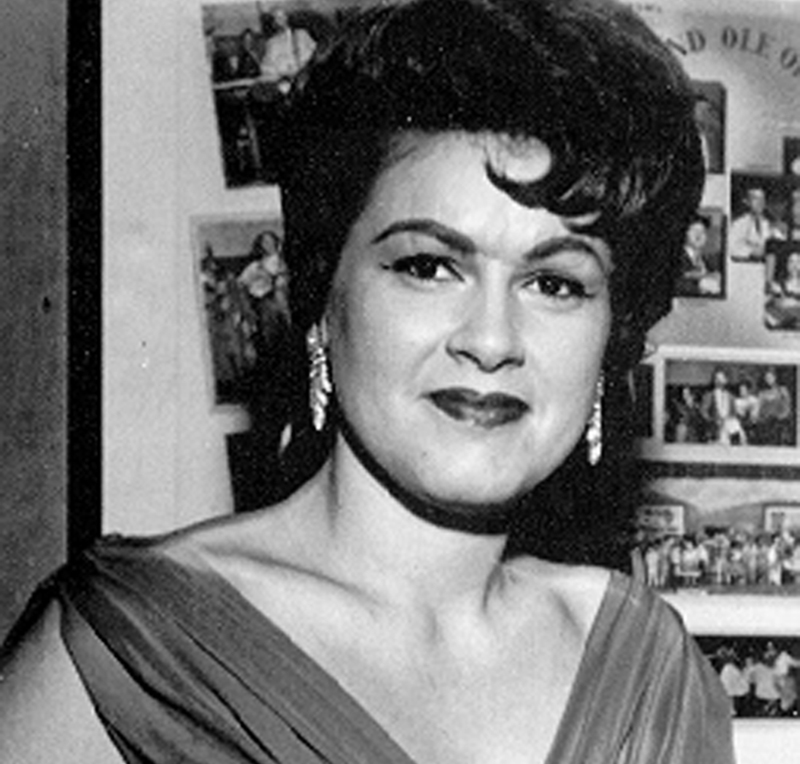
Just six weeks after the car accident, Patsy was back on stage performing at the Grand Ole Opry. The show was a success and the audience fell even harder for her endearing spirit. Unfortunately, recording music was a different beast.
Patsy was not a fan of Willie Nelson’s son “Crazy,” so when her husband and her producer convinced her to record it, she made a significant amount of changes. When it was time to record, her healing ribs couldn’t support the high notes. She rested for another week before returning to record the song.
She Was Crazy For Not Wanting To Do “Crazy”
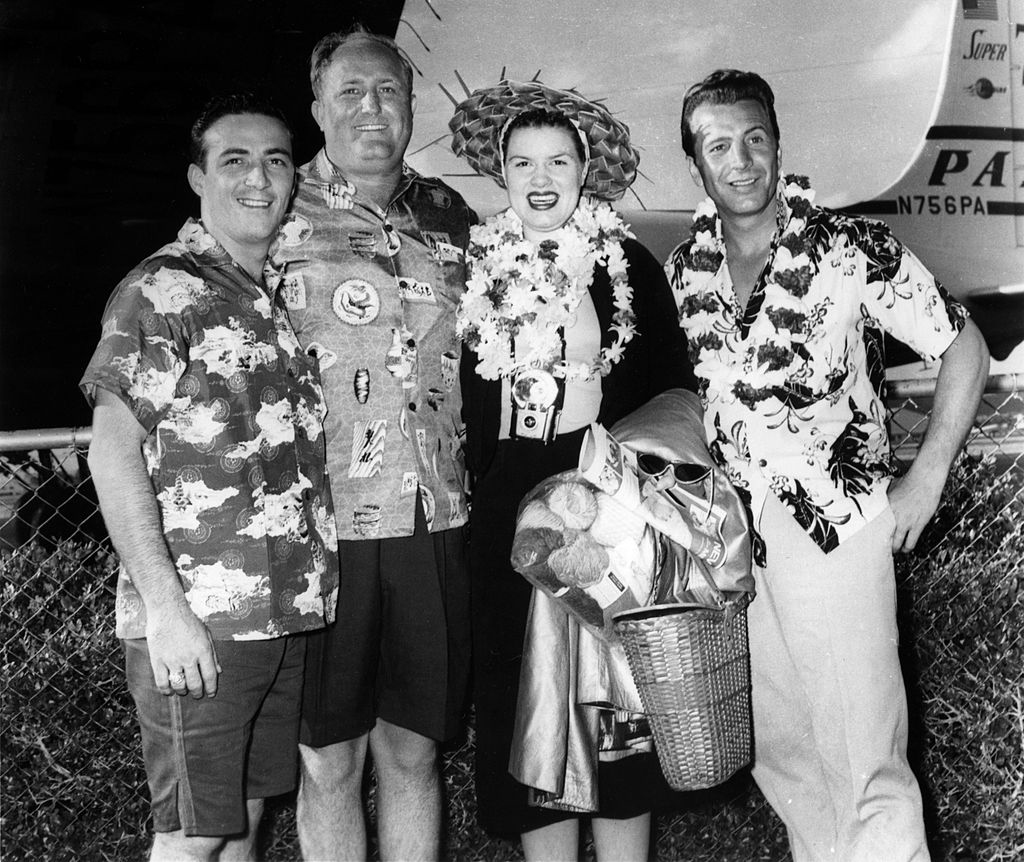
After recording the song “Crazy” in a single take, the single released in October. By November, the hit made it to No. 2 on the country chart and No. 9 on Billboard’s pop chart. At this time, Cline had a three-year-old daughter and an eleven-month-old infant son at home while she adjusted to the struggles brought on by her car accident.
Despite all of her challenges, the 28-year-old managed to maintain her footing in the industry. “Crazy,” went on to become Cline’s biggest pop hit.
Once Again, Suffering Brought About Success
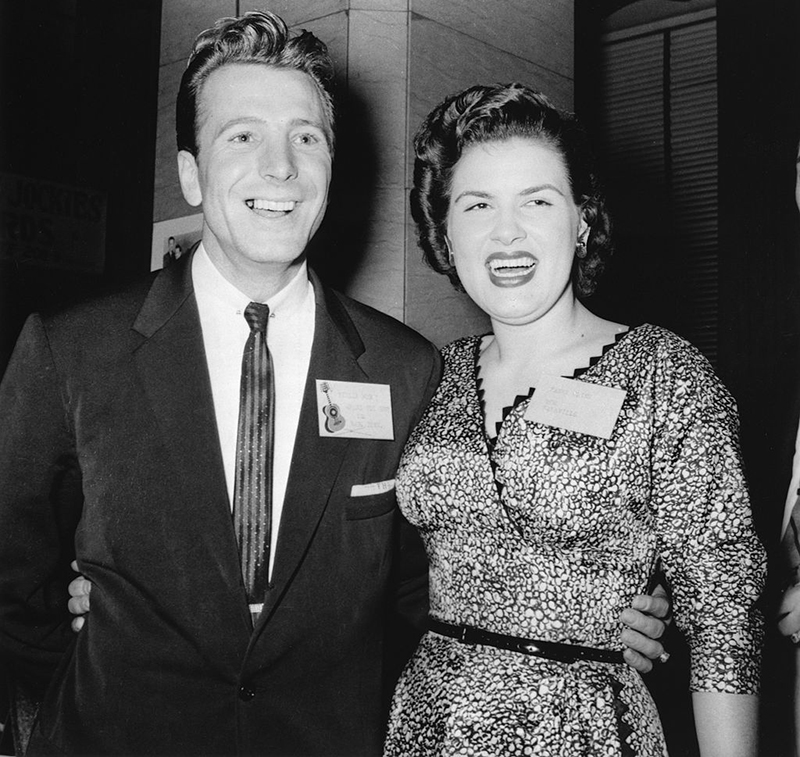
The massive success of the hit “Crazy” may have had something to do with her car accident. A critic from Allmusic notes that “Cline’s reading of the lyric is filled with an aching world-weariness that transforms the tune into one of the first big crossover hits without even trying hard.”
Similar to when she was young and had a throat infection, which changed her voice and ultimately launched her singing career, Patsy managed to turn a horrible situation around and garnish massive success from it.
The End Of That Year Was Just The Start
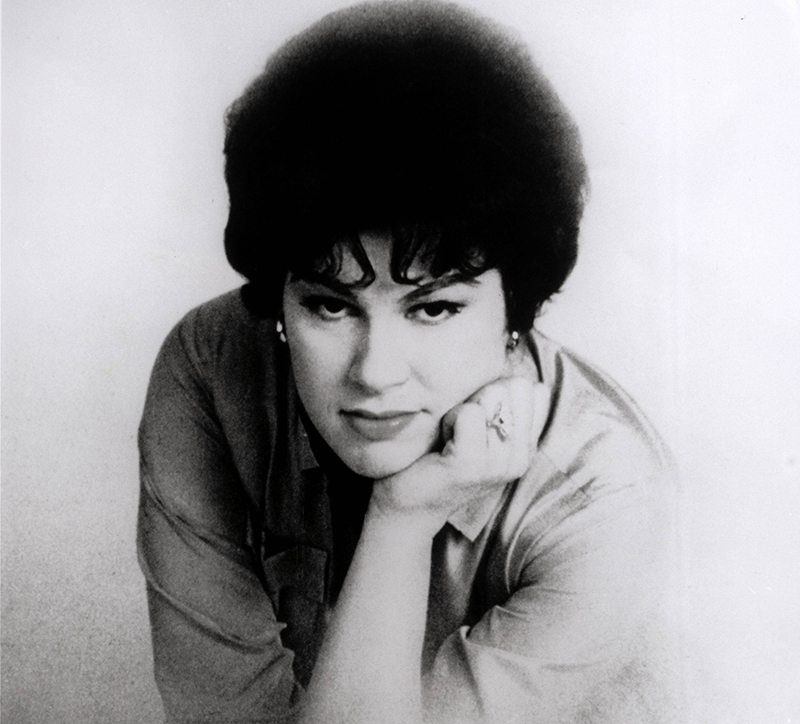
In November of 1961, Patsy was invited to perform at Carnegie Hall in New York. She also released her second studio album, Patsy Cline Showcase. She won several awards that year including “Favorite Female Vocalist” and “Most Programmed Female Artist.”
She began recording her third studio album which included “She’s Got You.” The song was recorded in December of 1961, and by 1962 it was No. 1 on the Billboard country chart and No. 43 in the United Kingdom singles chart.
The Sign She Had Made It
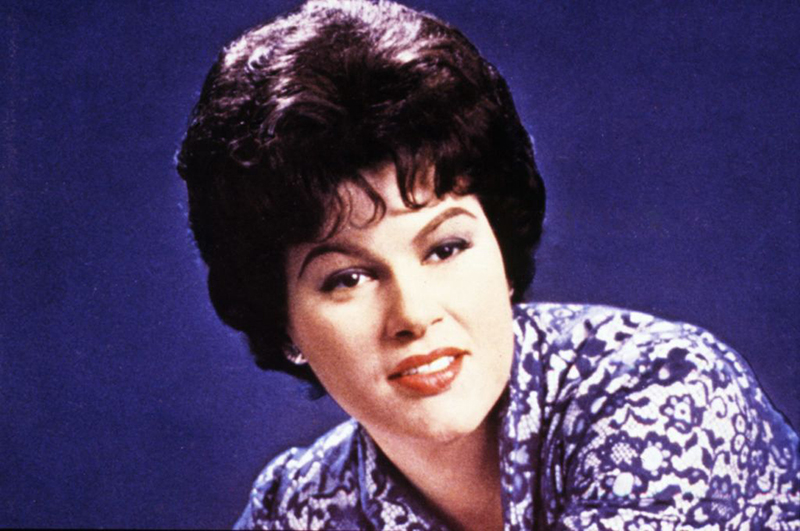
She had hit after hit in 1962, which earned Patsy enough money to purchase a farmhouse in a Tennessee suburb. Biographer Ellis Nassour quotes country star Dotty West as describing the house as Patsy’s “mansion, the sign she’d arrived.”
Patsy’s manager Randy Hughes booked a show for her at the Merri-Mint Theatre in Las Vegas for 35 days. Though the experience was not positive for Cline due to homesickness, the engagement made Cline the first female country artist to headline in Vegas, according to NPR.
She Saw Her Own End
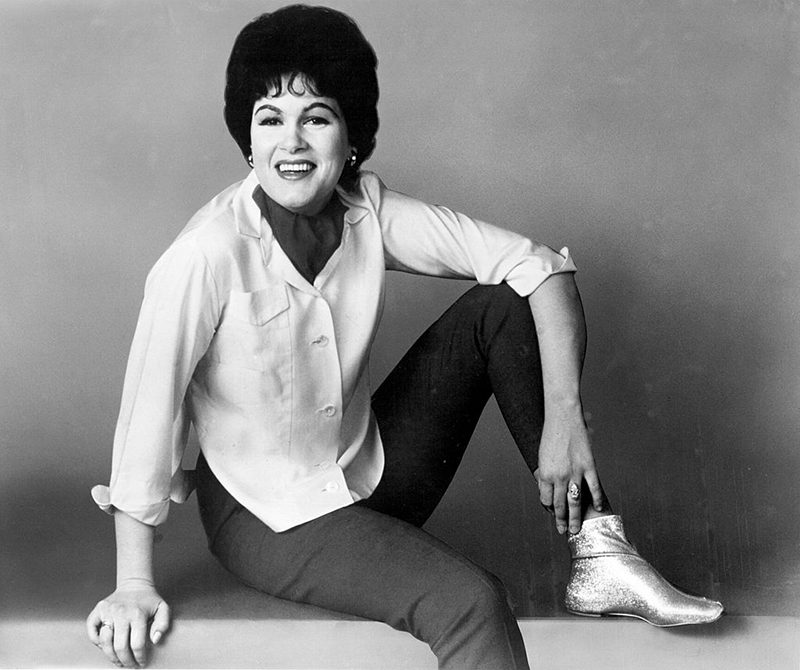
According to The Encyclopedia of Country Music, Dottie West, June Carter Cash, and Loretta Lynn, all of whom were friends of Patsy Cline’s, have recalled Patsy expressing a intuition that something bad was going to happen, and that she wouldn’t live much longer.
After a performance in Kansas City on March 3, 1963, Patsy’s flight was delayed due to weather conditions. She refused to join her husband on a 16 hour car ride home, and instead boarded a plane on March 5th. After ignoring weather warnings, Hughes piloted the plane into a fatal nosedive that claimed the lives of everyone onboard.
The Patsy Cline Story
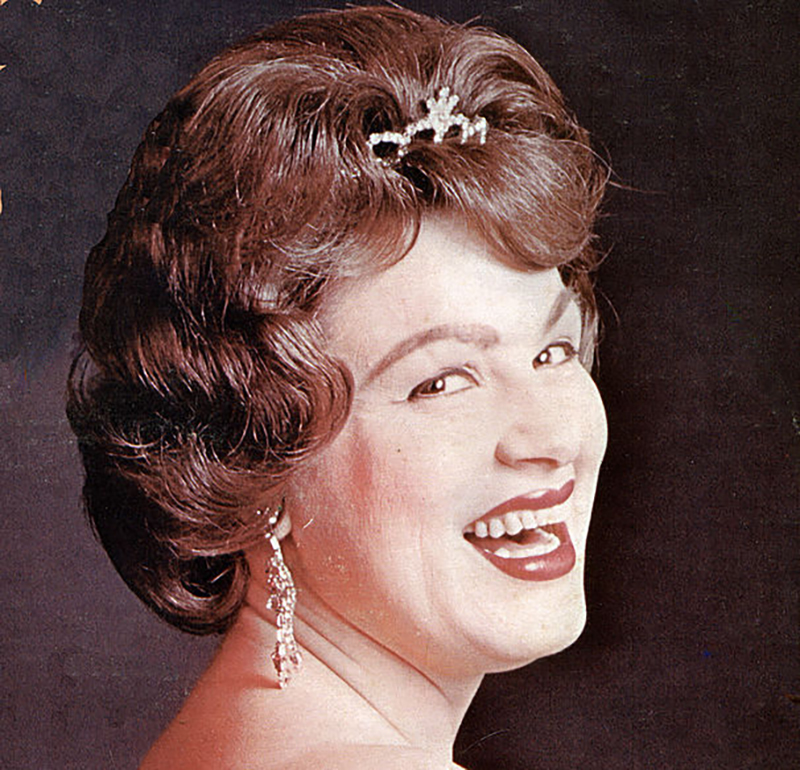
The Patsy Cline Story was an album released by Decca Records after the star’s death at the age of 30. The album made Patsy a commercial success even after her passing. MCA released a box set named The Patsy Cline Collection in 1991.
Patsy has been portrayed in several films and television series. Her biopic, Sweet Dreams, came out in 1985 and starred Jessica Lange as Patsy. Multiple documentaries about the star have also aired over the decades. Today, Patsy is regarded as one of the greatest country and pop vocalists of all time.





